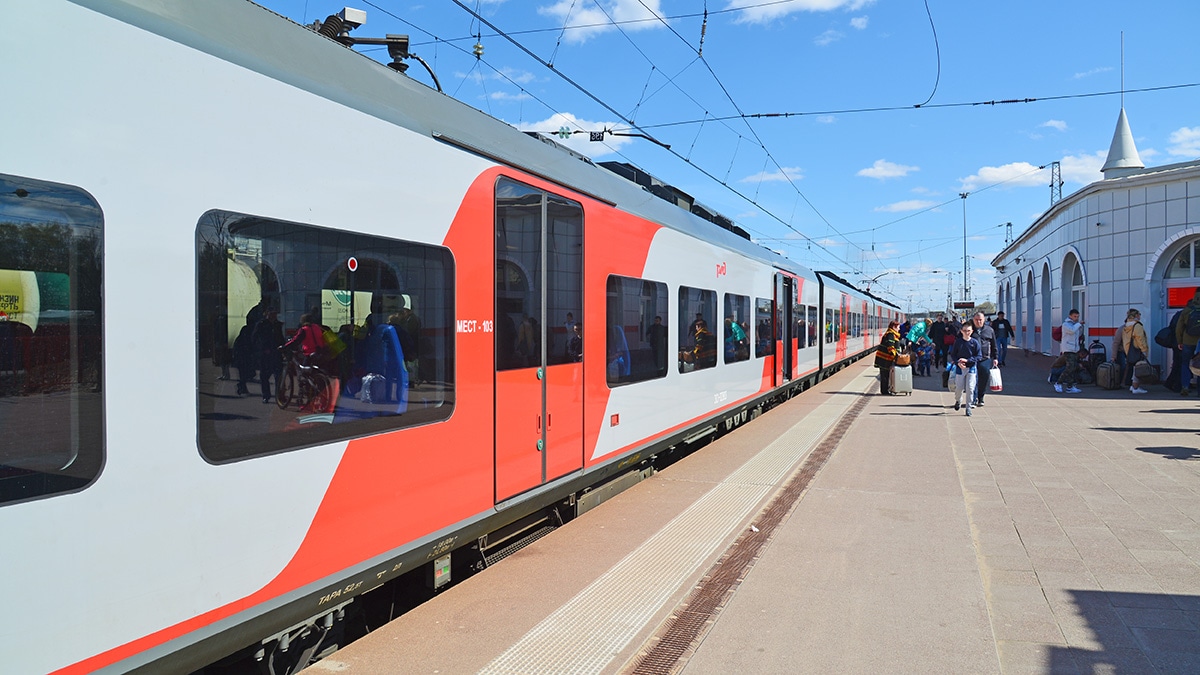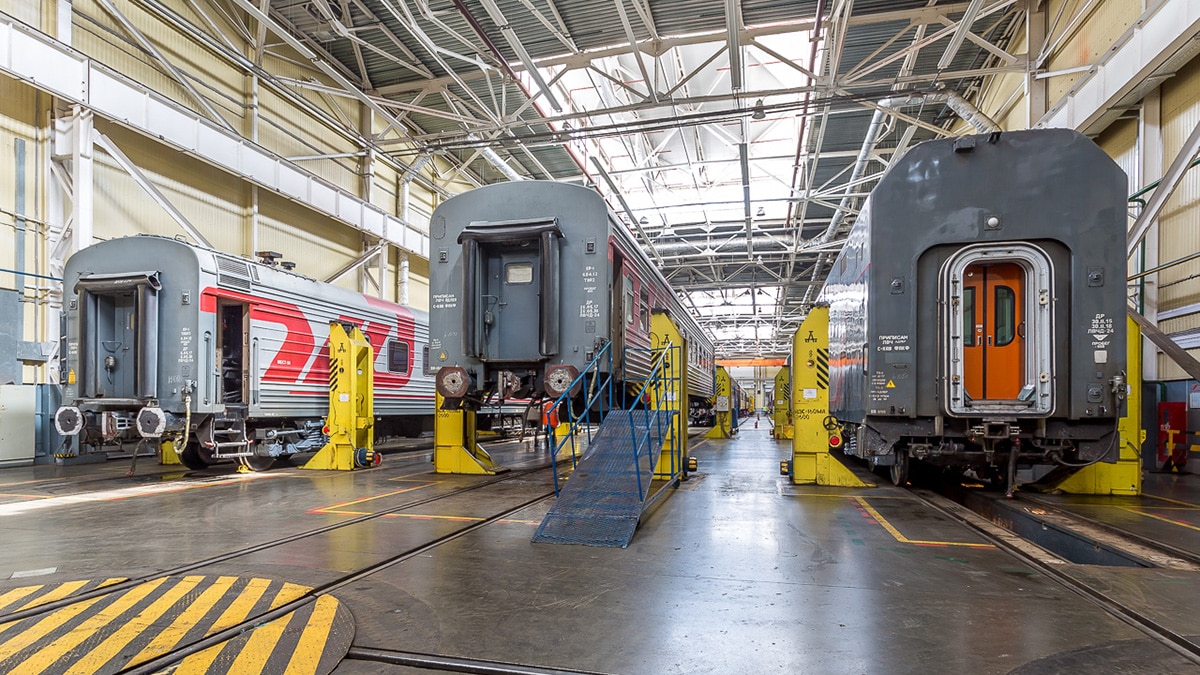INVESTMENT MANAGEMENT
As an integral component of the Development Strategy, the Company’s Investment Policy establishes investment priorities, structure, criteria, areas, and sources.
INVESTMENT RANKING
The Company’s investment projects are ranked into five categories:
- Long-term projects
- Replacement of retired fixed assets, generating economic impact
- Cost-effective projects
- Replacement of retired fixed assets generating technological impact
- Technological and social projects.
Each project is ranked from 0 to 100.
The higher the score, the higher priority is given to the project within the investment programme.
| Programme | ||
|---|---|---|
| Share in the overall investment programme, % | Score | |
| Long-term projects: Renovation of the Orekhovo-Zuyevo passenger carriage depot, carriage-washing as well as blasting and painting facilities | 18 | 63 to 100 |
| Replacement of retired fixed assets with direct economic impact, including rolling stock replacement and upgrades for branded trains | 23 | 46 to 100 |
| Projects with a direct economic effect, including acquisition of double-decker carriages and e-ticket sales development | 38 | 26 to 80 |
| Replacement of retired fixed assets generating technological impact, including upgrading rolling stock and re-equipping depot facilities | 15 | 18 to 45 |
| Technological and social projects | 6 | 0 to 25 |
| Total | 100 | – |
INVESTMENT STRUCTURE
Expenditures for FPC’s investment programme totalled RUB 25.9 billion in 2017.
In the reporting period, RUB 22.5 billion (86.8% of investment) were allocated to rolling stock replacement and upgrades:
- RUB 17.8 billion for acquiring 425 new passenger carriages:
- 329 third-class sleeping carriages
- 37 compartment carriages
- 9 administrative carriages
- 9 dining carriages
- 41 double-decker carriages
- RUB 4.7 billion were used to perform overhauls for 250 carriages with service life extension.
The remaining capex, totalling RUB 1.5 billion or 6.1% of the programme, was used to support depot upgrades, IT projects, and other initiatives.
The new rolling stock was purchased to upgrade the fleet and replace retired carriages.
The Company’s carriage procurement programme prioritises rolling stock acquisition to upgrade its trains. To achieve this goal, the Company purchased 384 carriages worth RUB 14.4 billion in 2017, including 329 third-class carriages.
Purchasing third-class sleeping carriages was a priority in 2017, in response to the forecasted shortage in the third-class sleeping carriage fleet during the summer peak season. Other carriage types will be purchased in 2018–2019.
For profitable, high-demand passenger destinations, the Company also purchased 41 double-decker carriages (worth RUB 3.4 billion) to introduce trains on the following routes:
- Kislovodsk – Moscow
- Saint Petersburg – Adler
- Adler – Rostov.
The type of rolling stock for each destination is selected based on economic factors such as profitability and return on investment, as well as technical limitations such as utilising particular carriages on certain routes.
Double-decker carriages have twice the capacity of single-decker carriages and are therefore more cost-effective. One double-decker carriage can replace two single-decker carriages, enabling a twofold reduction of passenger trains on destinations with limited infrastructure. All passenger service comfort requirements are met by FPC’s double-decker rolling stock.
As part of its 2017 investment programme, the Company financed a RUB 6.6 billion Passenger Rolling Stock Upgrade project. A large portion of the funds (RUB 4.7 billion) were used to perform overhauls with service life extension (KVRs) and upgrades for 250 carriages in order to improve their marketability. These measures primarily include installing environmentally friendly toilets and providing passengers with internet access on branded trains. RUB 0.8 billion were allocated in 2017 for equipping 534 carriages with environmentally friendly toilet facilities, and RUB 0.7 billion were spent on providing Wi-Fi internet access in 3,200 branded train carriages.
During KVRs, carriages are equipped with air conditioners and environmentally friendly toilet units, making them comparable in terms of comfort with newly built carriages. KVR costs 2.2–2.5 times less than a new carriage, which is critical when retiring rolling stock en masse due to expired service life.
The investment programme also provided for depot upgrade projects and IT projects.
RUB 0.9 billion were invested in depot upgrades.
Investments in depots were primarily used to:
- upgrade existing production facilities (RUB 0.7 billion)
- upgrade hazardous production facilities and purchase equipment to ensure uninterrupted depot operations (RUB 0.2 billion).
RUB 0.4 billion were spent on IT projects in 2017. Priority areas include developing electronic sales channels and automating the Company’s operating processes.
Investments in other projects aimed at transport safety and security totalled RUB 0.2 billion.
Sources of financing for the 2017 Investment Programme:
- Equity: RUB 13.7 billion
- Borrowings: RUB 12.2 billion
ID f359fd127bc874ea24db409dc61630f1 отсутствует в базе>
Investment programme structure, RUB billion| Item | |||
|---|---|---|---|
| 2016 | 2017 | +/– | |
| Rolling stock acquisition | 14.7 | 17.8 | 3.1 |
| Rolling stock upgrades | 3.2 | 6.6 | 3.4 |
| Depot upgrades | 0.8 | 0.9 | 0.1 |
| IT projects | 0.3 | 0.4 | 0.1 |
| Other projects | 0.4 | 0.2 | –0.2 |
| Total | 19.4 | 25.9 | 6.5 |
The key reason for the year-on-year change in the size of capital investments was the larger number of passenger carriages purchased in 2017, at 425 carriages compared with 294 in 2016 – a year- on-year increase of 131 passenger carriages or RUB 3.1 billion
PRIORITY INVESTMENT AREAS
Customer-focused investment
FPC spent RUB 22.9 billion in 2017 to improve its customer experience through a number of initiatives:
- 425 new, highly efficient passenger carriages were purchased, with improved performance and passenger comfort totalling RUB 17.8 billion and aimed at reducing transit times and enhancing both transport safety and passenger experience
- RUB 4.7 billion were spent on overhauling 250 passenger carriages.
In addition, RUB 0.4 billion were spent on the implementation of information technology innovations.
Investment in safety
RUB 0.4 billion were spent in 2017 on enhancing the safety and quality of passenger services.
Major investments in transport safety included:
- RUB 0.1 billion to implement the comprehensive transport safety & security programme
- RUB 0.2 billion to replace retired rolling stock
- RUB 0.1 billion to install new frames, bolsters, and 1,520 mm gauge bogies during scheduled carriage repairs.
Upgrades
To maintain its existing carriage repair and maintenance facilities, FPC invested RUB 2.6 billion in rehabilitation and upgrades of its fixed assets in 2017.

MID-TERM INVESTMENT
FPC’s investment programme for 2018-2020 includes the purchase of 350 double-decker carriages worth a total of RUB 30.7 billion for use on profitable routes.
FPC’s priority within its rolling stock investment is the purchase of carriages for branded trains. To this end, the Company plans to purchase 1,431 Russian-made single-deckers in 2018–2020. In order to expand the area covered by Daytime Express train services, FPC plans to purchase 90 carriages to launch Lastochka electric trains on the following routes: Moscow – Nizhny Novgorod, Moscow – Kursk, Moscow – Smolensk, Adler – Krasnodar, Moscow – Saransk.
The Passenger Rolling Stock Upgrade project for 2018-2020 outlines capex in the amount of RUB 32.5 billion, including RUB 31.2 billion for overhauling 1,564 carriages for service life extension.
The programme also provides for depot upgrade projects and IT investment projects.
Overall, RUB 5.8 billion worth of investments is planned for depot upgrades in 2018–2020, while RUB 0.7 billion will be invested into IT projects during the same period. Priority projects in this area include development of electronic sales channels and automation of the Company’s operating processes.
FPC plans to invest a total of RUB 1.2 billion into other projects in 2018–2020.
